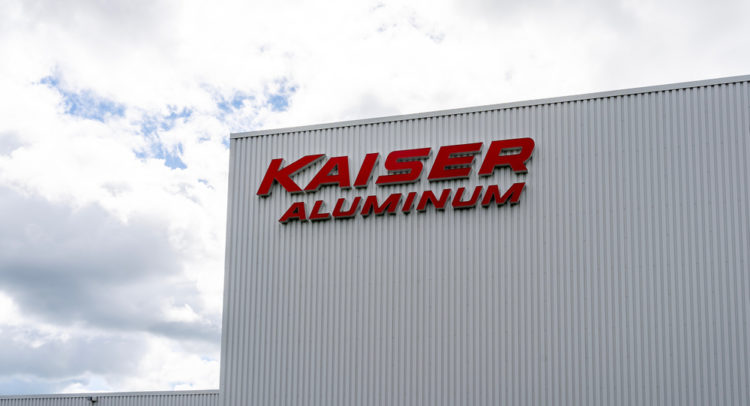California-based Kaiser Aluminum Corp. (KALU) provides semi-fabricated specialty aluminum products to a diverse range of industries like aerospace and defense, automobile, electronics and consumer durables.
KALU’s recent Q2 results were a mixed bag. It missed out on earnings but remained ahead of consensus revenue estimates.
Let’s take a look at the company’s financial performance and what’s changed in its key risk factors that investors should be aware of.
On the back of continued improvement in demand, during the quarter, across all of its end markets and a 184% year-over-year jump in shipments, KALU’s revenue increased to $741 million versus $276 million a year ago, beating analysts estimate of $519.2 million.
The President and CEO of KALU, Keith A. Harvey, said, “Our commercial aerospace end market is beginning to demonstrate positive momentum as air travel continues to recover and demand for our defense-related applications remains strong… Although our automotive business is temporarily dampened as ongoing shortages of semiconductor chips affects North American light vehicle production, we anticipate this issue will abate and volume will recover in the second half of 2021.”
Owing to integration costs, higher overhead, and short-term inefficiencies, earnings per share at $1 missed the Street’s estimate by $0.44. (See Kaiser Aluminum stock chart on TipRanks)
Harvey added, “The company will be well-positioned over the longer-term to deliver value-added revenue approaching $2 billion with a mid to high 20% adjusted EBITDA margin.”
Following KALU’s Q2 performance, Credit Suisse analyst Curt Woodworth reiterated a Hold rating on the stock, while increasing the price target to $110 from $90, implying 7.2% downside potential.

Now, let’s look at what has changed in the company’s key risk factors profile.
According to the new Tipranks Risk Factors tool, KALU’s two main risk categories are Finance & Corporate and Ability to Sell, which account for 33% and 25%, respectively, of the total 40 risks identified. Since June, the company has added three new key risk factors.
Under the Finance & Corporate category, the company highlights that it is exposed to risks arising from receivables supply chain financing arrangements. Termination of these arrangements could negatively impact KALU’s financial conditions, cash flows, and liquidity.
Under the Production risk category, KALU noted that its recently acquired Warrick business is dependent on Alcoa for certain resources needed for day-to-day operations. Failure by Alcoa in providing these support services upon agreed terms could cause substantial costs to keep the Warrick rolling mill operational or result in a shutdown of its operations. This, in turn, could negatively affect KALU.
Under the Ability to Sell risk category, KALU acknowledges that its aluminum beverage and food packaging products are subject to competition from substitute products and a decrease in demand, which may affect the profitability and cash flows of the company.
The Finance & Corporate risk factor’s sector average is at 49%, compared to KALU’s 33%. Shares are up 23% so far this year.

Related News:
F5 Networks Q3 Results Surpass Expectations; Stock Gains 6.1%
Logitech Delivers Impressive Q1 Results on Strong Revenues
Brown & Brown Posts Upbeat Results in Q2









